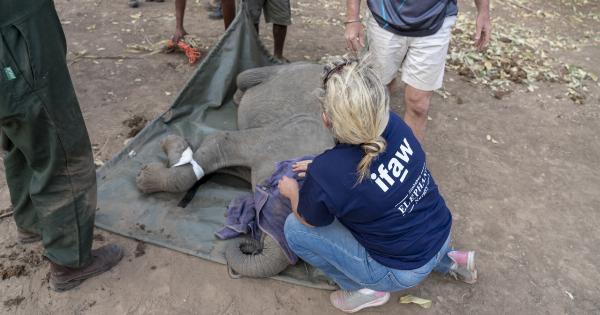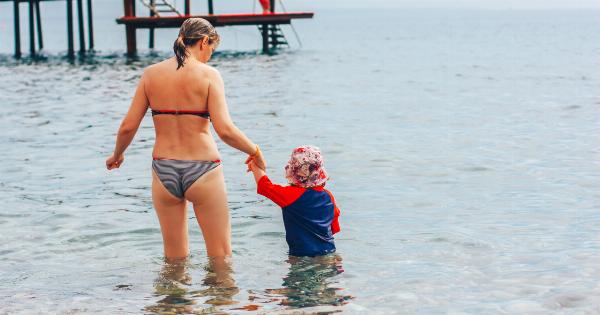As summer approaches, it is crucial to educate individuals on drowning prevention and response to ensure the safety of those around water bodies. Dr. Kyriakakou, a renowned expert in the field, shares valuable insights on this topic.
With years of experience and expertise in water safety, Dr. Kyriakakou’s advice can help save lives and prevent tragic accidents. In this article, we will discuss the essential tips and guidelines provided by Dr. Kyriakakou to promote drowning prevention and an efficient response in case of emergencies.
The Importance of Swim Lessons
Dr. Kyriakakou emphasizes the significance of teaching children how to swim from an early age. Swimming lessons not only develop water safety skills but also enhance confidence and physical abilities.
It is crucial to choose a qualified instructor or program that focuses on water safety along with swimming techniques. Parents should actively participate and ensure that their children receive regular lessons and practice swimming skills in different water environments.
Effective Supervision Around Water
Supervision is paramount when it comes to preventing drowning incidents. Dr. Kyriakakou advises that adults should always be vigilant and fully focused on watching children and weak swimmers when they are near or in water.
Distractions such as mobile phones, books, or socializing should be avoided completely. Designated “water watchers” can take turns to ensure continuous supervision and minimize the risk of accidents.
Securing Pools and Water Areas
Dr. Kyriakakou recommends implementing safety measures to secure pools, ponds, and other water areas.
Physical barriers like fences with self-closing gates and pool covers can prevent unsupervised access to water bodies, especially for toddlers and young children. Additionally, alarms on doors and gates leading to water areas can act as an extra layer of protection and alert adults on potential risks.
Emergency Preparedness and Response
Being prepared for emergencies is crucial to handle drowning incidents effectively. Dr. Kyriakakou advises knowing the basics of CPR (Cardiopulmonary Resuscitation). Immediate CPR can significantly improve the chances of survival for drowning victims.
It is recommended to take a certified CPR course to gain the necessary skills and confidence to administer first aid in such situations. Keep emergency contact numbers nearby and ensure everyone at home or near water bodies knows how to access immediate medical assistance.
Appropriate Use of Flotation Devices
When used properly, flotation devices can aid in water safety, especially for weak or inexperienced swimmers. Dr. Kyriakakou emphasizes that inflatable toys and non-certified flotation devices should not be relied upon for safety.
Instead, individuals should use Coast Guard-approved life jackets or personal flotation devices (PFDs) appropriate for their age, weight, and swimming skills. It is essential to ensure a proper fit and adjust the device accordingly for optimum safety and functionality.
Supervision Near Open Water
Dr. Kyriakakou warns about the dangers of open water bodies such as lakes, rivers, and oceans. Unlike pools, these areas often have unpredictable currents, hidden hazards, and varying depths.
Extra caution is required when supervising individuals near open water. Parents and guardians should be aware of the water conditions, check for warning signs, and enforce the use of appropriate safety equipment such as life jackets.
Educate children about the differences between swimming in controlled environments versus open water and the potential risks associated with each.
Pool Rules and Education
Dr. Kyriakakou emphasizes the importance of establishing and following strict pool rules. These rules should include no running around the pool, no pushing or rough play, and no diving in shallow areas.
By setting clear guidelines, adults can ensure safer swimming environments. Educating children and visitors about these rules is essential and can significantly reduce the risk of accidents. Post signs with pool rules and safety reminders in visible locations for better awareness.
Alcohol and Water Safety
Dr. Kyriakakou advises against consuming alcoholic beverages while engaged in water-related activities. Alcohol impairs judgment, coordination, and reaction time, increasing the likelihood of accidents and drowning incidents.
Individuals should refrain from consuming alcohol excessively when near or in water bodies. Encourage responsible behavior and educate others about the potential dangers associated with alcohol consumption and water activities.
Teaching Water Survival Skills
Along with swimming lessons, Dr. Kyriakakou emphasizes teaching essential water survival skills. These skills include floating, treading water, and reaching rescue equipment.
Knowing what to do in case of exhaustion or when caught in a strong current can prevent panic and facilitate safe actions. Implementing water survival training alongside regular swimming lessons provides individuals with the knowledge and skills required to navigate challenging situations and increase their chances of survival.
Regular Maintenance of Pool and Safety Equipment
Dr. Kyriakakou highlights the significance of regular pool maintenance and checks on safety equipment. Pool owners should ensure that drains and other suction outlets meet safety regulations and are appropriately covered.
Non-compliant drains can lead to entrapment and pose serious risks. Additionally, inspect all safety equipment, such as life rings, life hooks, and reaching poles, to ensure they are in good working condition. Replace any damaged or worn-out equipment promptly.
Conclusion
Drowning prevention requires a combination of proactive measures, vigilant supervision, and emergency preparedness. Dr.
Kyriakakou’s expert advice provides valuable insights into promoting water safety and responding effectively in drowning incidents. By following these guidelines, individuals can protect themselves and their loved ones, minimizing the risk of accidents and ensuring safer water-related experiences for everyone.































